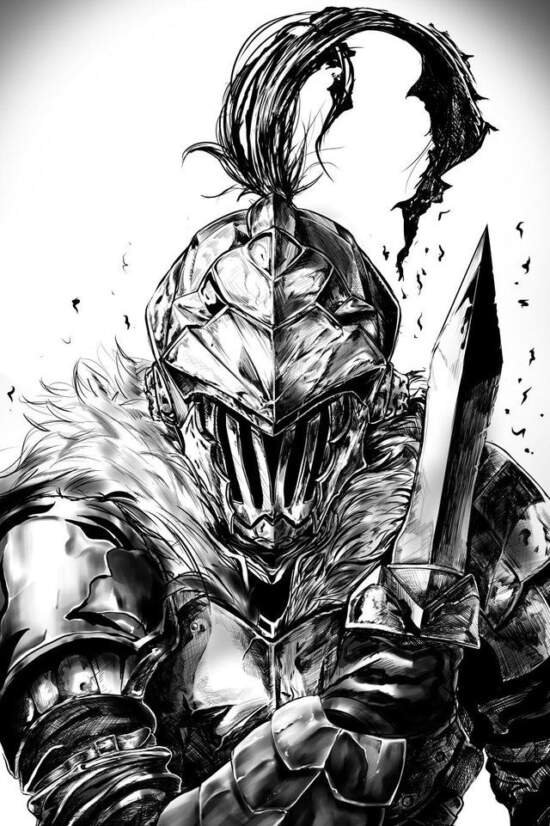Goblin Slayer
Writer: Kosuke Kurose
Publisher: Square Enix,
May 25, 2016-Present
Most manga readers will be familiar with the Goblin Slayer brand via the controversial anime, which attracted a lot of attention when it first debuted due to graphic scenes involving the brutal mauling, sexual assault, and massacre of several characters at the hands of goblins. The manga version of the story, published in the pages of Monthly Big Gangan, is a fairly straightforward parallel of the anime, and featured the same bleak tone and shocking scenes. But it did not receive as much international attention, mostly due to the niche availability of the medium.
For people who are coming in blind, whose only familiarity with the Goblin Slayer franchise is the controversy surrounding the violent content, the manga might be a hard sell. The manga gets away with more sensitive content, which is both its strength and weakness. On the one hand, potential readers who are turned off by the sensitive content might have little reason to start reading. On the other hand, the manga is better at fleshing out the narrative, able to show parts of the story that would otherwise be censored in the anime.
The story of Goblin Slayer is set in a medieval fantasy world, where an organization simply referred to as The Guild subcontracts adventurers for various jobs in exchange for monetary payment. These jobs mostly revolve around the kind of quests you normally find in fantasy role playing games, and mostly involve hunting down monsters or acquiring rare artefacts.
The protagonist of the story is the most interesting part of Goblin Slayer, which is odd given that he is intentionally written to have extremely limited range as a character. The reader, and most of the characters in the story, has never seen his face. He is monosyllabic, and his sole purpose in life is to hunt down and kill goblins. He lacks social graces and is only motivated to do things beyond sleeping and eating if it somehow involves the slaying of goblins.
The protagonist’s extreme obsession with killing goblins is particularly unique among his fellow adventurers, because, within the story, goblins are weak and considered minor nuisances. This is the case to the point where adventurers ignore goblin-related contracts, in favor of more prestigious and higher paying jobs such as hunting dragons, giants, demons, and other terrible monsters.

This is where the appeal of Goblin Slayer comes in, and is the plot-related justification for the controversial/violent scenes. The massacre/sexual assault scene happens early on in the story and, as horrible as it is, serves a very important purpose: it drives home the point that the goblins, despite their reputation as weak and unworthy of attention from seasoned warriors, are very dangerous if left to their own devices. They are as cunning as they are savage, and have the capacity to learn from their own mistakes. They multiply by impregnating humans, and use both their numbers and guerilla tactics to raid small towns and villages. They might eventually get routed, but the ones who escape and survive learn to adapt and grow even stronger and more savage.

Goblin Slayer himself is nothing special. He can’t cast magic, and he has no inhuman abilities to speak of. But he spent most of his life hunting down goblins and has become an expert at it. He’s less of a heroic warrior and more of an exterminator, relying on his familiarity with goblins’ behavior, the terrain, and various weapons and tricks to ensure that infestations are resolved with finality. This stoic protagonist is basically a medieval fantasy version of Marvel Comics’ The Punisher – insane, driven, and singularly obsessed with an endless crusade against an idea of an enemy.
The manga feels very episodic at first, as it follows Goblin Slayer on various missions while revealing bits and pieces of his past (including the reason for his obsession with killing goblins). He picks up companions along the way, and tries to learn social customs, usually to comedic effect. The story gets fleshed out the further it goes, and starts to take on a slightly more shonen feel. But it still retains the bleak, violent tone that made the series so divisive among fans. Goblin Slayer is up to nine volumes as of writing, and the narrative has so far added a lot of elements (including a hint that perhaps the world of Goblin Slayer is just a role playing board game) that sort of muddy the experience, but not to the point of turning away someone who has invested enough time into the series.
We recommend Goblin Slayer to anyone looking for a new fantasy series to follow. The caveat is that there are elements to the story that might be hard to stomach for those who are sensitive to gross violence and extreme sexual content. But this content does serve a purpose, and the writer does not linger on them, keeping them brief or keeping them off panel when they have already served their purpose in the narrative. Goblin Slayer is the kind of manga that requires an open mind and a little bit of patience, but it will reward you with an engaging story with equally engaging characters.


